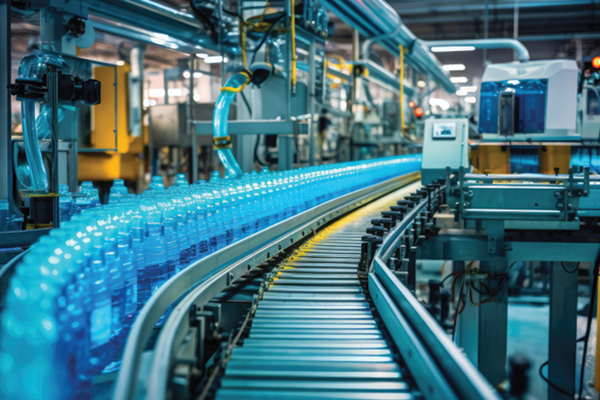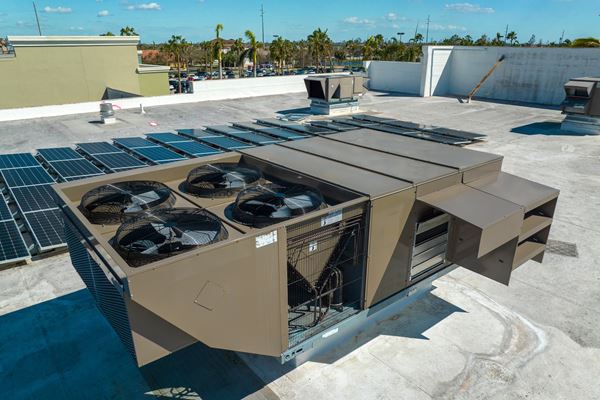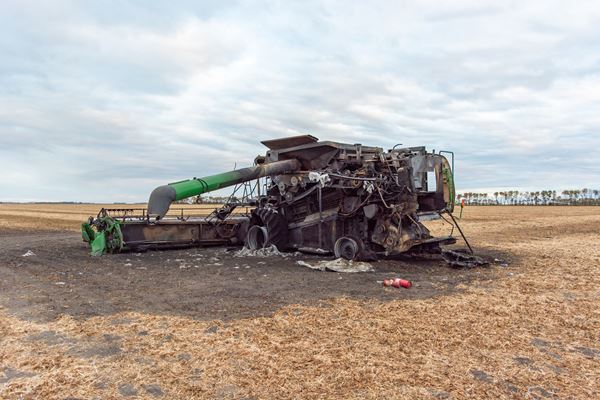Vertical Transport Equipment Damage Assessment

Effective damage assessment and maintenance standards are crucial for ensuring the safety and functionality of vertical transport equipment. This blog post explores the essential practices for evaluating damage to this equipment, examining the standards, common damage mechanisms, and best assessment methodologies.
Vertical Transport Equipment: Damage Assessment and Maintenance Standards
Vertical transport equipment, including elevators and escalators, is essential in high-rise facilities for the swift and safe movement of people. Damage to this equipment often occurs as a result of sources such as water, fire, explosions, and mechanical failures.
Envista has collected statistics over the years of the most common forms of damage to this equipment and the costs of reinstatement. Presented below is the data for the period of 2015-2025.
|
Loss Type |
Percentage of Claims |
Average Claim Amount |
|
Water |
47% |
$306,890.06 |
|
Breakdown |
24% |
$98,657.44 |
|
Lightning/Surge |
16% |
$68,811.34 |
|
Fire/Explosion |
6% |
$311,558.38 |
As outlined in the table above, water damage is particularly common, responsible for nearly half of the claims observed. Causes include leaks from potable/HVAC/fire suppression water sources, flooding, or condensation, leading to corrosion and electrical failures. Fire and/or explosion damage, though less frequent, is usually more severe and impacts multiple units, requiring extensive repairs.
Standards are critical in guiding the assessment and maintenance of vertical transport equipment. The American Society of Mechanical Engineers (ASME) provides comprehensive guidelines through documents like the ASME A17.1 Safety Code for Elevators and Escalators, updated every three years. This standard prescribes the necessary capabilities and safety features of vertical transport assets from a design and implementation standpoint.
Additionally, ASME A17.2 and A17.6 offer specific guidelines for inspection and maintenance, addressing critical aspects such as waste management and accident prevention. Australian standards, AS 1735.1.1 and AS 1735.5, align closely with ASME standards, ensuring consistency in safety and performance requirements.
A systematic approach is essential when assessing damage to vertical transport equipment. Depending on the nature of the damage, Envista will generally start from the machine room (if present), which houses the main motor, controller, and drive, and then progress downward to inspect the top of the car, the interior, and the lift pit. Key components to examine include the car door, motor, and governor assembly. Compensation ropes or chains are often included in water claims and must also be thoroughly evaluated for any signs of damage or wear.
For MRL (Machine Room-Less) lifts without a machine room, the main components are integrated into the top of the shaft, requiring a different assessment approach. The electronics, motor, and governor are located at the top of the lift shaft and not in a machine room. The absence of a dedicated machine room can complicate access and maintenance. Familiarity with the specific configurations and requirements of these systems can ensure accurate damage assessment and effective repairs.
The door operator motor, often mounted near the top of the car, is responsible for the elevator's vertical movement. Modern designs, including MRL configurations, save space and enhance system efficiency.
Key Components and Maintenance of Vertical Transport Systems
The car top houses several important electronic components, including the top-of-car (TOC) controller and various sensors. The controller, often encased in a yellow box, allows lift technicians to operate and monitor the elevator. This component is crucial during maintenance and inspection, especially after water damage incidents. Additionally, the car top includes lighting control equipment and emergency stop buttons, which are essential for both functionality and safety. While these components are generally well-protected against water damage, regular inspections are necessary to ensure their integrity.
Inside the Lift Car: Vulnerable but Essential Components
Inside the elevator car, the car operating panel (COP) serves as the primary interface for passengers. This panel includes buttons, display screens, and sometimes security card readers. The placement of the COP can affect its susceptibility to water damage; panels located near the door are more exposed and thus more likely to be damaged in the event of water flow from above. Display screens are becoming more sophisticated and expensive, making their protection and maintenance a priority. Another critical component is the door beam sensor array, which controls the opening and closing of the doors. These sensors are designed to withstand water exposure to a certain extent, but should still be inspected after a water exposure event to ensure proper functionality. While the sensors themselves are located at the door, the electronic control equipment is often located in a well-protected enclosure atop the car or above the door.
Elevator Shaft and Pit: Core Components and Risk Areas
The elevator shaft and pit contain several components crucial for the overall operation of the system. Compensation ropes or chains connect the car to the counterweight, ensuring balanced movement. In modern elevators, hoist flat belts are increasingly replacing traditional ropes, offering improved performance and durability. These belts, made of rubber-encased cables, can generally withstand casual water exposure. The pit also houses safety buffers, which act as safety stops at the end of the car's travel. These buffers can be hydraulic, spring-based, or even just a rubber disk atop a metal stand, each with its own maintenance requirements.
Critical Components and Maintenance of Lifts and Escalators
Elevators, especially traction lifts, contain multiple mechanical components like sheaves, compensation ropes, governors, and buffers.
Traction lifts operate using a series of ropes to move the elevator car, which can wear out over time.
Hydraulic lifts, uncommon in Oceania, are prevalent in North America. Typically, hydraulic lifts service buildings up to five or six stories unless equipped with roped hydraulics, in which case they can sometimes service 7 or more levels.
Escalator Design and Key Maintenance Requirements
Escalators function similarly to conveyor belts, incorporating components such as step chains and rollers. They have upper and lower pits housing motors and chain linkages that drive the steps or pallets. Maintenance of escalators includes regular inspection of step chains, roller bearings, and tensioning hardware. Water damage poses a significant risk to both lifts and escalators, especially in flood-prone areas. Water exposure can corrode electronic components, motor sensors, and control hardware, necessitating expensive repairs and replacements. However, it is not a guarantee that items are damaged in every water event, thus the need for inspection and assessment.
Hoist Ropes and Their Lifespan in Elevator Systems
Hoist ropes are vital in elevator systems and require regular condition assessments. Rope manufacturers often state the ropes have a lifespan of 10 to 15 years under normal conditions, but uncontrolled spaces, lack of lubrication, and excessive use/operation can accelerate their deterioration. Regular inspections for fatigue breaks, diameter reduction, and rouging are crucial to determine when replacement is needed. Proper maintenance and timely replacement are essential to ensure elevator safety and reliability. ASME hoist rope standards have clear directions on when ropes require replacement after they have been subject to wear.
Water Damage Mechanisms in Vertical Transportation Systems
Water damage mechanisms differ based on the source and extent of exposure. In elevators, water can enter from the top or higher levels, affecting electronics, motor sensors, and car interiors. Accumulated water in the lift pit can damage the governor cable, pit lighting, and other components. Escalators are similarly vulnerable, with water exposure potentially harming the step chain, roller bearings, and control electronics. Regular inspections and preventive measures like sump pumps and proper drainage systems can mitigate water damage. Also, inspections after water immersion can give context on the severity of damage, as minor intrusion doesn’t always result in severe damage.
Escalator Flooding Case Study: The Importance of Evidence-Based Assessments
In one case investigated by Envista, inclined travellators (similar to escalators but with flat pallets instead of steps) in a shopping center were affected by minor flooding, leading to claims of extensive damage. The escalator contractor initially addressed immediate issues by replacing damaged electronics and re-lubricating mechanical parts, returning the equipment to safe and reliable operation. However, the contractor subsequently stated that the entire escalator pallet chain required replacement despite less than 10% of the pallets having been submerged (and subsequently immediately decontaminated and relubricated).
Further inspection revealed that claims like stretched pallet chains and scratched handrails lacked evidence. This scenario underscores the importance of evidence-based assessments in maintenance, ensuring decisions are driven by actual findings rather than assumptions, and resources are allocated effectively.
Maintenance for Vertical Transport and Building Safety
Maintaining escalator and lift systems is essential for the safety and functionality of high-rise buildings. A thorough understanding of damage mechanisms, component maintenance requirements, and systematic inspection approaches is crucial for effective evaluation and mitigation of potential issues.
Regular inspections, particularly in the context of environmental factors like water damage, help ensure the continued reliable operation of these complex systems. Adhering to best practices in maintenance and monitoring allows professionals to manage the normal wear of operation and environmental challenges efficiently.
Contact Envista Forensics Today
When equipment failure, water intrusion, or weather-related damage threatens the safety and uptime of your building’s vertical transportation or any other critical system, having the right forensic experts on your side makes all the difference.
Envista Forensics combines multidisciplinary engineering knowledge with decades of investigative experience to uncover root cause, quantify loss, and guide efficient recovery.
Ready to discuss a current incident or strengthen your preventive maintenance strategy?
Call Envista Forensics or visit our website to connect with an expert and schedule a consultation.
Together, we’ll protect your assets, control costs, and keep your facilities running smoothly.
Our experts are ready to help.




